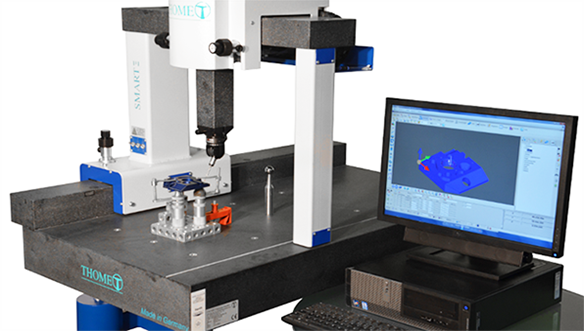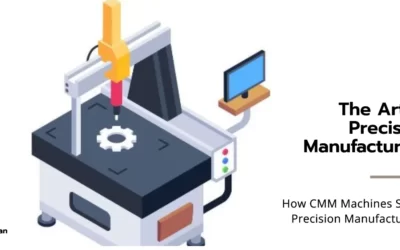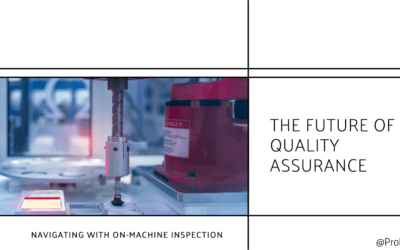
Coordinate measuring machine
Measurement is an integral part of the manufacturing process as it helps maintain the final product’s desired quality and accuracy level. Measurements allow manufacturers to detect and correct possible deviations or errors. Various measurement machines and equipment are used in manufacturing, such as micrometers, profilometers, coordinate measuring machines (CMM), and height gauges.
Among the various measurement instruments used in manufacturing, the CMM is the most popular due to its versatility and accuracy. CMM machines can measure multiple features and properties, mostly an object’s physical geometry. This article will discuss the CMM machine in depth, including its working principle, importance in manufacturing, advantages, and other related aspects.
What is a Coordinate Measuring Machine (CMM)?
A Coordinate Measuring Machine is a sophisticated measuring tool used in manufacturing that precisely measures an object’s physical geometry and properties. It is called a Coordinate Measuring Machine because it measures the coordinates of points on the surface of an object to determine its shape and dimensions.
CMM Machining uses a probe (mechanical or optical) that touches or scans the surface of the measuring object. The machine then uses the data obtained from the probe to create a digital representation of the object’s geometry, which is used for further analysis through the computer.
What measurements are possible with a CMM?
A CMM, or Coordinate Measuring Machine, can measure various physical characteristics and properties of an object with high accuracy and precision. Some of the measurements that a CMM can make include the following;
| Dimensions | Length, width, and height of an object, as well as other geometric features such as diameters, angles, and radii. |
| Surface profiles | Contour and shape of an object’s surface, including deviations from its intended shape. |
| Surface roughness | The machine can also measure the roughness of an object’s surface. |
| Hole and bore measurements | Diameter & depth of holes, bores, and other internal features. |
| Position & orientation | An object’s position and orientation in three-dimensional space are essential for ensuring proper assembly and alignment. |
Working Principle of CMM Machine
Different parts of CMM machines
CMM uses a mechanical or optical probe to interact with the surface of the measuring object. As the probe touches or scans the object’s surface, the machines gather information and data from the interaction.
For example, suppose the CMM is measuring the dimensions of the object. In that case, the probe will collect information such as the length, width, height, angles, radii, shape, contours, or other geometric features. On the other hand, if a CMM is measuring surface roughness, the probe will collect information such as hole and bore dimensions, position and orientation, and peak and valleys on the surface.
Next, the data measured by the probe gets stored in CMM software. The data could contain different information according to the probe type and path followed by the probe, which can be set by digital instructions (or programming). Finally, the intended decisions are made by analyzing the measured data with the CAD model specifications, dimensions, and tolerances.
What is meant by mechanical and optical probes?
A mechanical probe is a small stylus mounted on the end of a rigid arm. It touches the surface and sends a signal back to the machine. The machine creates a digital representation of the object’s geometry by analyzing the probe’s position in three-dimensional space. Then, the digital geometry can be analyzed and compared to the desired dimensions.
In contrast, an optical probe measures the surface of an object using a light source and a camera. The light source illuminates the surface while the camera captures images at different angles. The machine then creates a three-dimensional representation of geometry using those images.
Try Prolean Now!
How to Use a CMM Machine?
Using a CMM machine in manufacturing helps optimize accuracy, quality, and production time. However, using a CMM machine is not easy. It involves several steps that need to be carried out carefully.

The probe used in CMM measurement
- Part preparation
The accuracy of the measurement results depends on the proper preparation of the part. Therefore, the first step is to ensure the part is clean and free of debris or contaminants.
It is necessary to avoid interference with the probe or the measurement process. Additionally, the operator must define the part’s coordinate system by identifying the part’s origin and orientation. This information is necessary for the CMM machine to accurately measure the part’s features and dimensions.
- Probe selection
The type of probe used depends on the part’s geometry and the features to be measured. You must choose a probe that can access all the critical features and dimensions of the part. The common types of probes available in the market include;
- Touch-trigger probes: To measure discrete points on a part’s surface.
- Scanning probes: To measure continuous surfaces.
- Optical probes: To capture part features without physical contact.
Once the appropriate probe is selected, the operator must install and calibrate it on the CMM machine.
- Calibration of CMM machine
Calibration involves verifying the accuracy of the measurement system and ensuring that it meets the required standards. In CMM measurements, the process consists in using a known artifact, such as a calibrated sphere, to test the CMM machine’s accuracy and repeatability.
Any discrepancies found during calibration should be corrected by adjusting the CMM machine’s settings, such as probe calibration, temperature compensation, or machine alignment.
- Programming the measurement routine
The measurement routine specifies the points to be measured, the order in which they are measured, and the measurement parameters. It can be programmed manually or generated automatically using software that imports CAD models of the part to be measured.
- Performing the measurement
Next, the CMM moves the probe along the programmed path, taking measurements at each point or continuously scanning the part’s surface. The measurements are recorded and stored in the CMM’s software. Later, data can be analyzed to decide the part’s quality and compliance with manufacturing requirements.
- Analysis of the measurement data
Ultimately, measurement data is analyzed to ensure that the part meets the required specifications. This may involve comparing the measurements to the part’s design specifications or tolerance limits specified by the manufacturer. If the part does not meet the required specifications, adjustments can be made to the manufacturing process to correct the issue.
Importance of CMM Machine in Precise Manufacturing
CMMs help to ensure that parts are manufactured to the highest quality standards while also improving the efficiency and productivity of the manufacturing process. The role of CMM in manufacturing can be summarized in the following points.
Precise specifications
CMMs help ensure that manufactured parts meet the design’s dimensional, geometric, and surface finish requirements. This helps to minimize the risk of defects, errors, and inconsistencies in the manufacturing process.
Improve manufacturing efficiency
CMM measurements are a great resource of feedback on the performance of machines and tools used in manufacturing. This helps manufacturers to optimize the processes and identify potential problems before they occur.
Statistical process control (SPC)
CMMs enable manufacturers to perform SPC to monitor the manufacturing process continuously. Regular monitoring identifies the trends or patterns in the data that may indicate problems or variations in the part’s quality. This information is useful for adjusting the manufacturing process.
Reduce inspection time
The high accuracy and precision of CMMs allow for gathering the measurement data quickly and accurately. This eliminates the need for manual inspection methods that are time-consuming and prone to errors. As a result, manufacturers can reduce the time required to inspect parts and products, which helps to improve the overall efficiency of the manufacturing process.
Ensure compliance with quality standards.
Compliance with quality standards is essential in modern manufacturing to meet consumer expectations, ensure safety, and keep a strategic advantage. CMMs ensure quality standards like ISO, AS9100, and others. These standards define specific requirements for manufacturing parts or products to ensure their safety, reliability, and functionality.
Increase production capacity
One of the significant benefits of using CMM machines in manufacturing is that they can help to increase production capacity. CMM machines can be used to optimize the production process by identifying areas where improvements can be made to reduce cycle times and increase efficiency. This can be done by analyzing the data collected by the CMM machines and identifying any bottlenecks or areas where production is slowing down.
More resources: Surface Roughness: Everything You Need to Know
Summing Up
Coordinate Measuring Machines (CMM) plays a significant role in ensuring the desired quality and accuracy in the final product. CMMs can measure multiple physical characteristics of an object, such as its dimensions, surface profiles, roughness, hole & bore measurements, and orientation.
At Prolean, we use advanced CMM machines to ensure the required precision and specifications. Our CMM machines can work for all sizes and shapes of manufactured parts, regardless of the manufacturing approach used. Therefore, contact us if you need to create parts or products through any method, CNC, sheet metal, EDM, or other. We will ensure your quality and precision requirements with CMM measurements.
FAQ’s
What is a CMM machine?
A coordinate measuring machine is a tool used in manufacturing to measure an object’s physical geometry and properties. It uses a probe to touch or scan the surface of the measuring object and then create a digital representation of the object’s geometry.
What measurements are possible with a CMM?
A CMM machine can measure an object’s various physical characteristics and properties, including dimensions, surface profiles, surface roughness, position, and orientation.
What are the advantages of using a CMM machine?
The CMM machine is popular in manufacturing because of its versatility and accuracy. It can measure multiple features and properties of an object with a high degree of accuracy and precision, which allows manufacturers to detect and correct possible deviations or errors, ensuring the desired level of quality in the final product.





0 Comments